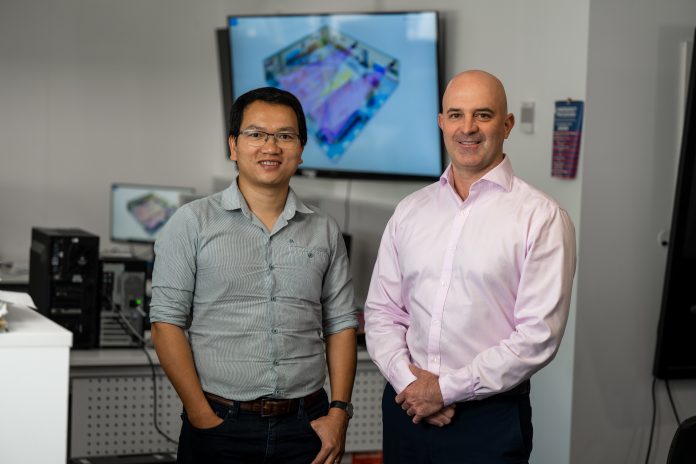An international research team including three researchers from QUT have identified new ways for retailers to use artificial intelligence (AI) in concert with in-store cameras to better service consumer behaviour and tailor store layouts to maximise sales.
In research published in Artificial Intelligence Review, the team propose an AI-powered store layout design framework for retailers to best take advantage of recent advances in AI techniques, and its sub-fields in computer vision and deep learning to monitor the physical shopping behaviours of their customers.
Store layout
QUT researchers Dr Kien Nguyen and Professor Clinton Fookes from the School of Electrical Engineering & Robotics and Professor Brett Martin, QUT Business School teamed up with researchers Dr Minh Le, from the University of Economics, Ho Chi Minh city, Vietnam, and Professor Ibrahim Cil from Sakarya University, Serdivan, Turkey, to conduct a comprehensive review on existing approaches to in store layout design.
Dr Nguyen says improving supermarket layout design – through understanding and prediction – is a vital tactic to improve customer satisfaction and increase sales.
“CCTV offers insights into how shoppers travel through the store; the route they take, and sections where they spend more time. This research proposes drilling down further, noting that people express emotion through observable facial expressions such as raising an eyebrow, eyes opening or smiling.
“Most importantly this paper proposes a comprehensive and novel framework to apply new AI techniques on top of the existing CCTV camera data to interpret and better understand customers and their behaviour in store,” he says.
Emotions and facial cues
Understanding customer emotion as they browse could provide marketers and managers with a valuable tool to understand customer reactions to the products they sell.
“Obvious actions like picking up products, putting products into the trolley, and returning products back to the shelf have attracted great interest for the smart retailers,” Dr Nguyen says.
“Other behaviours like staring at a product and reading the box of a product are a gold mine for marketing to understand the interest of customers in a product.”
Analytics and tracking
Layout managers could also employ heatmap analytics, human trajectory tracking and customer action recognition techniques to inform their decisions. This type of knowledge can be assessed directly from the video and can be helpful to understand customer behaviour at a store-level while avoiding the need to know about individual identities.
Professor Clinton Fookes says the team had proposed the Sense-Think-Act-Learn (STAL) framework for retailers.
“Firstly, ‘Sense’ is to collect raw data, say from video footage from a store’s CCTV cameras for processing and analysis. Store managers routinely do this with their own eyes; however, new approaches allow us to automate this aspect of sensing, and to perform this across the entire store,” Professor Fookes says.
“Secondly, ‘Think’ is to process the data collected through advanced AI, data analytics, and deep machine learning techniques, like how humans use their brains to process the incoming data.
“Thirdly, ‘Act’ is to use the knowledge and insights from the second phase to improve and optimise the supermarket layout. The process operates as a continuous learning cycle.”
Evaluate and predict
An advantage of this framework, says Professor Fookes, is that it allows retailers to evaluate store design predictions such as the traffic flow and behaviour when customers enter a store, or the popularity of store displays placed in different areas of the store.
“Stores like Woolworths and Coles already routinely use AI empowered algorithms to better serve customer interests and wants, and to provide personalised recommendations. This is particularly true at the point-of-sale system and through loyalty programs. This is simply another example of using AI to provide better data-driven store layouts and design, and to better understand customer behaviour in physical spaces,” says Professor Fookes.





